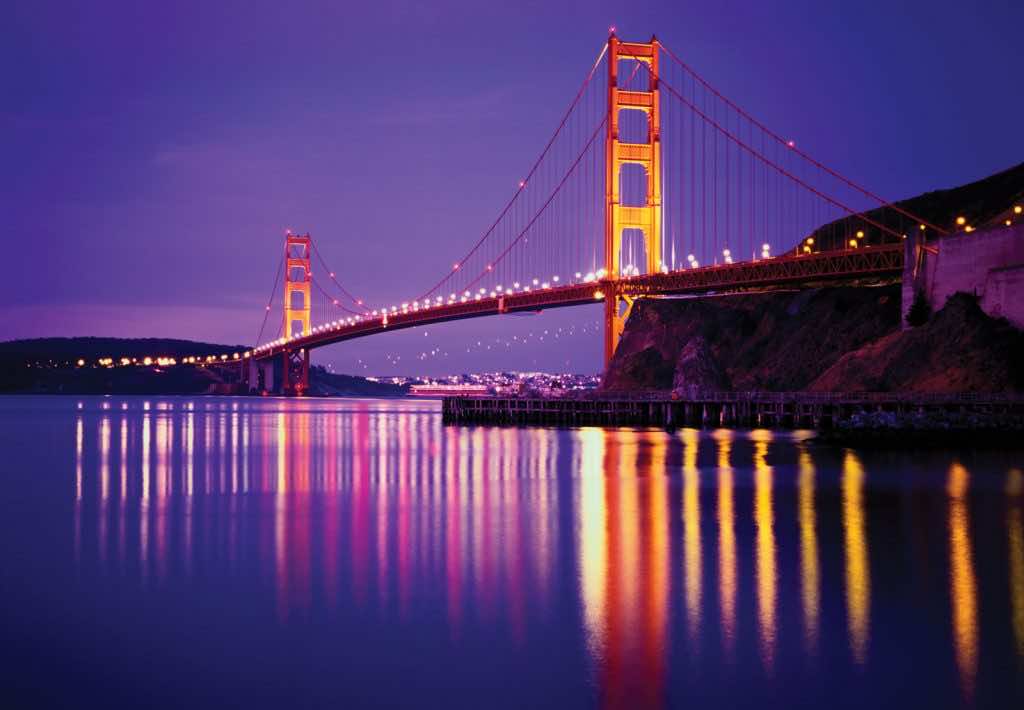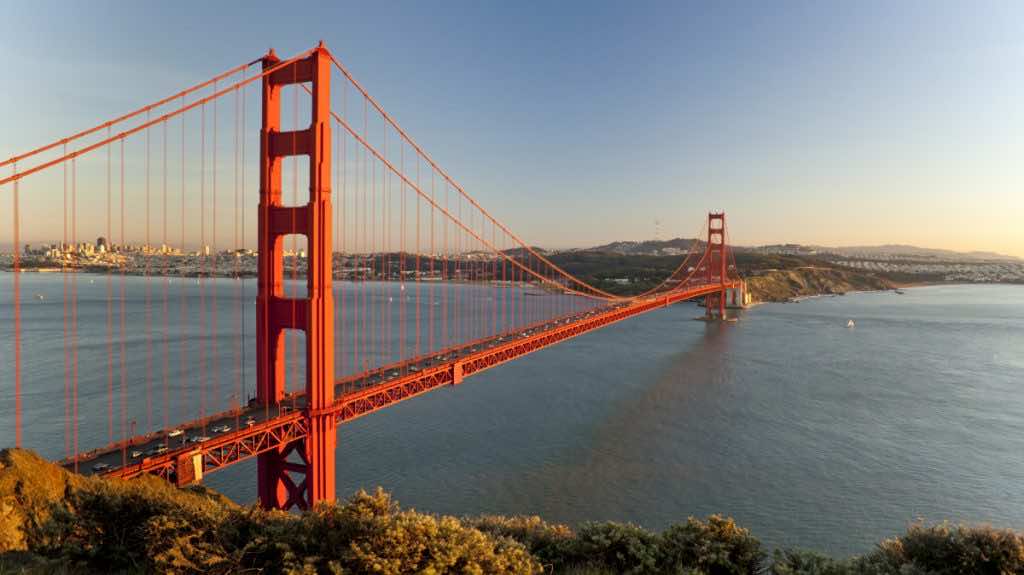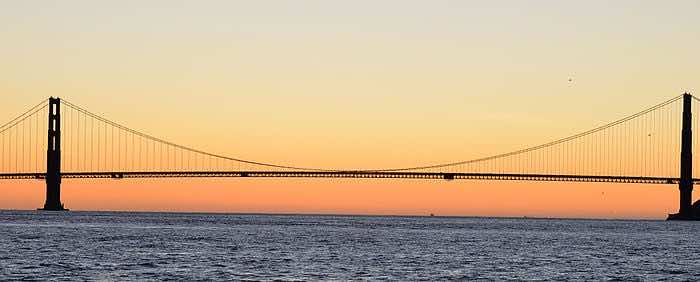The Golden Gate Bridge is perhaps the most iconic bridge in the world, with its deep orange span crossing the Golden Gate strait since it was opened in 1937. At the time, it was the world’s longest and the world’s tallest suspension bridge with a main span of 4,200 feet (1,280 m) and a total height of 746 feet (227 m). Today the bridge is one of the most internationally recognized symbols of San Francisco and California.

Initial proposasl to build a bridge across the strait was rejected until a design proposed by engineer Joseph Strauss gained momentum in 1916, although he had to largely redesign the whole bridge before it finally began construction. Until 1964, the Golden Gate Bridge had the longest suspension bridge main span in the world, at 4,200 feet (1,300 m). Since 1964 its main span length has been surpassed by fifteen bridges; it now has the second-longest main span in the United States, after the Verrazzano-Narrows Bridge in New York City. The total length of the Golden Gate Bridge from abutment to abutment is 8,981 feet (2,737 m). The Golden Gate Bridge’s clearance above high water averages 220 feet (67 m) while its towers, at 746 feet (227 m) above the water, were the world’s tallest on a suspension bridge until 1993 when it was surpassed by the Mezcala Bridge, in Mexico. The weight of the roadway is hung from 250 pairs of vertical suspender ropes, which are attached to two main cables. The main cables pass over the two main towers and are fixed in concrete at each end. Each cable is made of 27,572 strands of wire. The total length of galvanized steel wire used to fabricate both main cables is estimated to be 80,000 miles (130,000 km). Each of the bridge’s two towers has approximately 600,000 rivets.
Joseph Strauss, in collaboration with architect Irving Morrow, designed the overall shape of the bridge towers, the lighting scheme, and Art Deco elements, such as the tower decorations, streetlights, railing, and walkways. The color of the bridge, officially called International Orange, was chosen because of aesthetic as well as functional reasons, namely the manner in which it interacted with the natural surroundings of the bay area and the fact that it increased visibility in the dense fog that is a regular occurrence there.

The bridge is popular with pedestrians and bicyclists, and was built with walkways on either side of the six vehicle traffic lanes. Initially, they were separated from the traffic lanes by only a metal curb, but railings between the walkways and the traffic lanes were added in 2003, primarily as a measure to prevent bicyclists from falling into the roadway. The bridge carries about 112,000 vehicles per day according to the Golden Gate Bridge Highway and Transportation District



